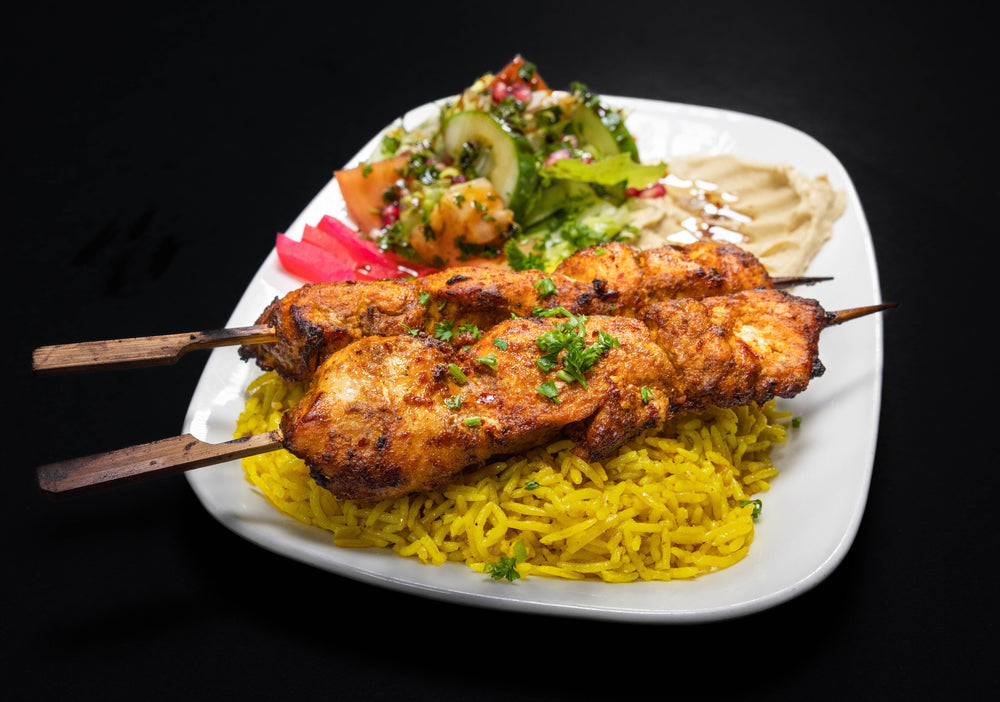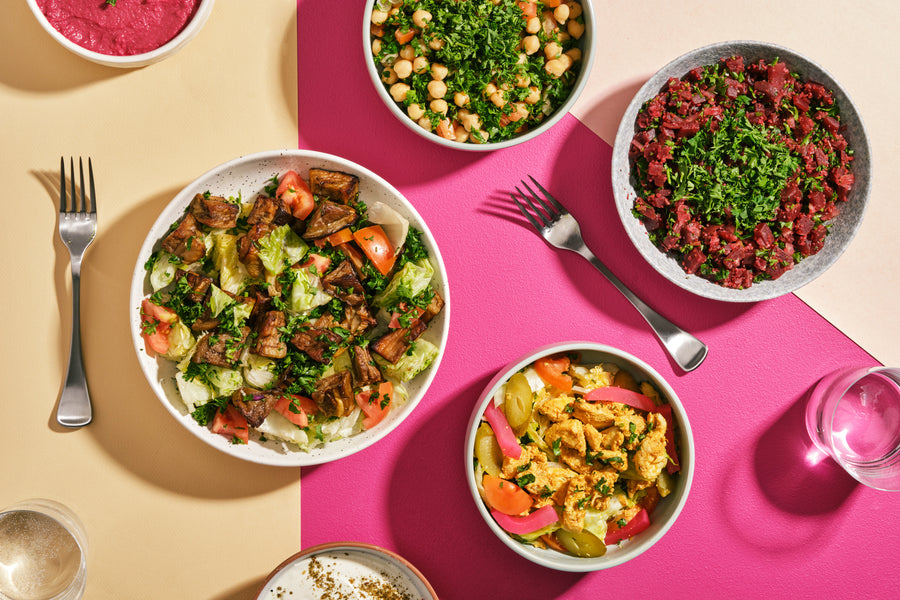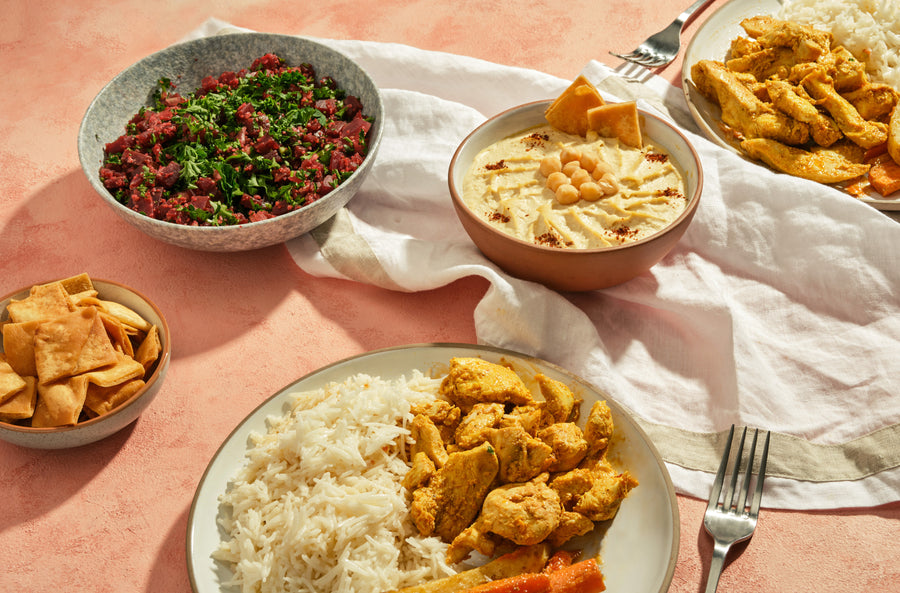10 Ways Brunch Kitsilano Vancouver BC Surprises Locals and Tourists Alike
All Concerning the Rich Flavors and Traditions of Syrian Cuisine: A Culinary Journey
Syrian cuisine offers a special blend of tastes and customs that show its rich cultural background. With staple components like olive oil and garlic, along with a variety of spices, the recipes are both diverse and inviting. From the complex prep work of kibbeh to the pleasant allure of baklava, each facet of this cooking landscape exposes much deeper tales. As one checks out the significance of these flavors, a better understanding of communal eating and party arises.
The Essence of Syrian Ingredients
The significance of Syrian components depends on their abundant diversity and deep-rooted social significance. Influenced by the country's different location and history, Syrian food includes a large range of flavors, herbs, and fresh fruit and vegetables. Staples such as olive oil, garlic, and lemon give a structure, while seasonings like coriander, cumin, and sumac add deepness and complexity to dishes.The use fresh natural herbs, including parsley and mint, highlights the significance of seasonal components. Furthermore, the region's productive soil returns a wealth of fruits and vegetables, such as tomatoes, pomegranates, and eggplants, which are important to lots of recipes. Grains like bulgur and rice form the base of numerous dishes, highlighting the significance of these components in Syrian society. This mix of flavors shows not just a cooking practice yet likewise a tapestry of historical influences, making Syrian active ingredients necessary to recognizing its food's dynamic character.

Iconic Cuisines of Syrian Cuisine
Syrian cuisine is renowned for its iconic recipes that showcase an abundant tapestry of appearances and tastes. Conventional meze plates offer a range of tiny recipes that entice the taste, while hearty main dishes provide satisfying centerpieces for dishes (Afternoon Tea Vancouver). To finish the experience, a choice of savory desserts includes a sweet note to the cooking journey
Typical Meze Plates

Hearty Main Courses
Passionate primary programs act as the centerpiece of Syrian dining, showcasing a mix of flavors that reflect the nation's rich cooking traditions. Meals such as kebab hindi, including marinaded lamb skewers, and the well known mujaddara, a comforting combination of lentils and rice, highlight using fresh active ingredients and aromatic seasonings. Another staple is the iconic kibbeh, made from bulgur wheat and minced meat, usually served in numerous types, consisting of baked, fried, or raw. Additionally, the flavors of the land come to life in dishes like stuffed vegetables, referred to as mahshi, which are loaded with rice, meat, and herbs. These main courses not just please cravings but also inform stories of family celebrations and cultural heritage.
Savory Desserts Choice
A delightful variety of treats defines the wonderful side of Syrian cuisine, offering a tantalizing end to any meal. Amongst the most well known confections are baklava, fragile layers of phyllo pastry loaded with nuts and saturated in syrup, and maamoul, shortbread-like cookies frequently packed with nuts or dates. Knafeh, an abundant dessert made from slim noodle-like bread taken in syrup and layered with cheese, is a popular choice, specifically during festive occasions. Furthermore, the aromatic and pleasant rice dessert, called roz bil laban, offers a comforting coating. These delicious treats not only showcase the area's cooking knowledge yet likewise reflect the cultural heritage of Syria, making them valued treats in both homes and restaurants alike.
Traditional Cooking Methods
Although contemporary comforts have influenced several culinary techniques, typical cooking methods remain necessary to Syrian cuisine. These techniques frequently stress making use of fresh, seasonal ingredients and focus on slow-moving food preparation to create rich flavors. Strategies such as grilling, braising, and stewing are prevalent, permitting the all-natural tastes of the active ingredients to shine through.One remarkable method is the prep work of kibbeh, a recipe made from finely ground meat and bulgur. It needs proficient hand-rolling into different shapes and can be baked, fried, or offered raw. Additionally, the art of making bread, particularly pita, is main to several dishes, frequently prepared in a conventional stone oven.Preservation methods like pickling and fermenting also play an essential function, boosting the variety of tastes located in Syrian dishes. These techniques not only mirror the region's farming heritage but additionally promote a solid sense of area via shared culinary practices.

The Role of Spices in Flavor
Spices offer as the heart beat of Syrian cuisine, infusing recipes with intricate flavors and aromatic deepness. Each seasoning plays a pivotal role, contributing not only to taste but also to the cultural heritage of the area. Frequently made use of seasonings consist of coriander, cumin, and sumac, each providing an one-of-a-kind profile that raises typical recipes. For instance, cumin provides heat and earthiness, while sumac adds a tangy illumination, boosting the general dish.Syrian chefs usually mix spices to create harmonious accounts, reflecting the elaborate balance of tastes that define the cuisine. Using spices is not just for flavoring; it likewise offers to protect food and improve its nutritional worth. This thoughtful consolidation highlights a deep understanding of the culinary arts, where spices end up being crucial storytellers, Continue sharing the abundant history and varied impacts that define Syrian gastronomy. Ultimately, spices are essential in crafting memorable and genuine Syrian dishes.
Cheery personalizeds and commemorative meals
Commemorative dishes in Syrian cuisine are noted by standard feast recipes that mirror the country's rich cooking heritage. Special celebrations commonly include distinct routines that boost the communal experience of dining. These personalizeds not just recognize the value of the occasions but likewise reinforce domestic and cultural bonds.
Traditional Feast Cuisines
When family members gather to celebrate significant celebrations in Syria, standard banquet dishes take spotlight, showcasing the rich cooking heritage of the area. These events typically include vivid plates of mezze, consisting of hummus, baba ghanoush, and tabbouleh, which function as fascinating starters. The main dish generally highlights lamb or hen, marinated and cooked to perfection, commonly accompanied by aromatic rice pilaf or bulgur. One of one of the most precious recipes is maqlooba, a split rice meal with vegetables and meat, turned inverted prior to serving. Sweets likewise play a vital duty, with baklava and knafeh using a pleasant coating to the meal. Each meal not just delights the palate but additionally mirrors the deep-rooted traditions and communal spirit of Syrian society.
Special Occasion Routines
Unique celebrations in Syria are marked by rich routines that intertwine food and festivity, mirroring the cultural importance of communal celebrations. navigate here Commemorative meals often include standard dishes such as kibbeh, tabbouleh, and various smoked meats, prepared with care and shared amongst friends and family. Throughout spiritual holidays like Eid al-Fitr and Eid al-Adha, family members integrated to prepare unique sugary foods like maamoul, symbolizing unity and pleasure. Weddings are especially elaborate, including multiple programs and lively screens of friendliness. These occasions are not merely concerning food; they incorporate songs, storytelling, and dancing, strengthening social bonds and cultural heritage. Via these routines, Syrians celebrate life's milestones, guaranteeing traditions are given through generations, enriching their cooking landscape.
The Relevance of Sharing and Neighborhood
Sharing meals is an essential element of Syrian culture, mirroring the ingrained values of neighborhood and link. In Syria, food is not just nutrition yet a method of bringing individuals with each other. Friends and families collect around the table to delight in traditional dishes, fostering bonds and developing long lasting memories. This public eating experience stresses friendliness, where hosts go to wonderful lengths to ensure every guest feels welcomed and nourished.The act of sharing food likewise represents generosity and solidarity, reinforcing social ties within areas and larger areas. During celebrations, it is usual for people to offer each other, showcasing a spirit of togetherness that transcends distinctiveness. Parties, whether huge or small, are typically marked by the sharing of dishes, where diverse tastes and meals come together, mirroring the rich tapestry of Syrian culture. Appropriately, the value of sharing and neighborhood in Syrian cuisine is not just a culinary practice however a critical social method.
A Culinary Exploration of Syrian Desserts
Although often overshadowed by full-flavored meals, Syrian sugary foods hold a cherished place in the country's cooking heritage. These confections mirror the region's abundant background, blending tastes and techniques from various societies. Conventional desserts like baklava, with its layers of phyllo bread, nuts, and honey syrup, display the virtuosity associated with Syrian food preparation. Ma'amoul, a shortbread-like cookie loaded with nuts or dates, is typically prepared for joyful celebrations, signifying hospitality and celebration.Another precious wonderful is Knafeh, a bread soaked in syrup and layered with cheese or lotion, providing a delightful contrast of appearances. Syrians also enjoy a range of fruit syrups and maintains, typically offered with tea or as component of a bigger spread throughout events. These sweets not just please the taste buds however also work as a bridge between generations, protecting the traditions and tales of Syrian culture with each delightful bite
Regularly Asked Questions
What Are the Health And Wellness Advantages of Standard Syrian Foods?
The wellness benefits of standard Syrian foods my sources consist of abundant nutrients from fresh veggies, beans, and whole grains. These components promote heart health, improve food digestion, and provide vital vitamins, adding to overall wellness and a balanced diet regimen.
Just How Has Syrian Food Evolved Over the Years?
Syrian food has developed significantly, influenced by historic profession courses, social exchanges, and local schedule of components. Traditional meals have actually integrated modern tastes and methods while preserving their rich heritage, showing a diverse culinary landscape.
Exist Vegetarian or Vegan Options in Syrian Cuisine?
Syrian cuisine offers various vegan and vegan choices, featuring dishes like falafel, tabbouleh, and stuffed grape leaves. These dishes highlight the area's rich agricultural heritage, showcasing fresh veggies, grains, and fragrant seasonings in vibrant mixes.
What Beverages Set Well With Syrian Dishes?
When thinking about drinks that match Syrian recipes, one may discover that mint ayran, tea, and pomegranate juice boost the meal's tastes. Additionally, red wine usually pairs well with the seasonings typically located in these cuisines.
How Can I Recreate Syrian Dishes in your home?
To recreate Syrian dishes at home, one need to check out genuine dishes, gather conventional ingredients, and utilize food preparation methods special to the cuisine. Exploring with spices and discussion also enhances the overall dining experience. Syrian food is renowned for its renowned meals that showcase a rich tapestry of tastes and appearances. Spices offer as the heartbeat of Syrian food, instilling dishes with intricate flavors and aromatic deepness. Celebratory dishes in Syrian food are noted by traditional feast recipes that show the nation's abundant culinary heritage. Events, whether big or little, are commonly noted by the sharing of meals, where diverse tastes and recipes come together, mirroring the rich tapestry of Syrian society. Syrian cuisine uses various vegan and vegan options, featuring meals like falafel, tabbouleh, and packed grape fallen leaves.